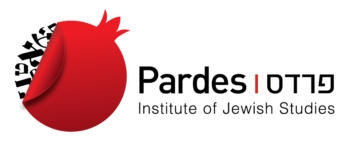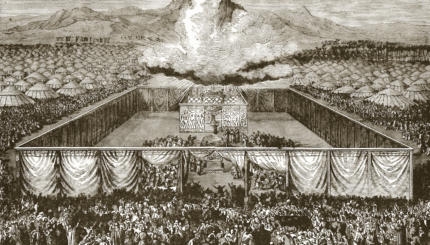Commentary on Parashat Tetzaveh, Exodus 27:20-30:10; Deuteronomy 25:17-19
Questions
1.What are the names of Aaron’s four sons?
2.In Parashat Shmini, two of Aaron’s sons are killed by God for taking strange fire into the Sanctuary. Which sons were not killed?
3.The short coat (ephod) to be worn by Aaron was made of what material and what were its four colors?
With your help, My Jewish Learning can provide endless opportunities for learning, connection and discovery.
4.The ephod was to contain how many of what kind of stones and what was to be engraved on them?
5.What was the purpose of the two stones and where were they sewn?
6.On the robe to be worn by the high priest, there were attached to the skirt a material of which colors in the shape of what kind of fruit?
7.What was to be attached between the pomegranates and what was their purpose?
8.A golden plate was to be made which would be worn as a hat. What was to be engraved on it?
9.The breastplate was called the breastplate of what?
10.How many stones were on the breastplate and what was their configuration?
11.Three animals were to be brought to the high priest and his sons for sacrifice, along with two other items. What were the three animals and what were the other items?
12.The first ram is sacrificed and its blood is dashed about the altar. What happens to the blood of the second ram?
13.The altar which was to be built to burn incense was to be made of what?
14.On this same altar, we were told not to burn strange incense, make burnt offerings, nor meal offerings, nor drink offerings. What was Aaron told to do at this altar, besides burn sweet spices?
Answers
1. The names of Aaron’s four sons were Nadab, Abihu, Eleazar, and Ithamar (28:1).
2.Eleazar and Ithamar were not killed.
3. The ephod was made of fine twined linen and was gold, blue, purple, and scarlet (28:6).
4. The ephod contained two onyx engraved with the names of B’nai Yisrael (the 12 tribes), 6 on each stone (28:9-10).
5. The purpose of the stones was to act as a memorial for B’nai Yisrael; on the shoulder pieces of the ephod (28:12).
6. On the robe of the high priest there were blue, purple, & scarlet pomegranates (28:33).
7.Golden bells were attached to the pomegranates. The bells were attached to make a sound when the high preist went in and out of a holy place, to remind him of God’s presence so that he not die; it was also a warning to the people as to when the high priest was performing his duties (28:35).
8.”Holy to the Lord” was engraved on it (28:36).
9. It was called the breastplate of judgment (28:29).
10. There were 12 stones on the breastplate in four rows of three each (28:21).
11. The three animals were a young bullock and two rams without blemish. The other items were unleavened bread and cakes mingled with oil and unleavened wafers spread with oil (29:1).
12. Some of the blood of the second ram is put upon the tip of the right ear, the thumb of the right hand, and the great toe of the right foot of Aaron and his sons; the rest is dashed about the altar (29:20).
13. The altar was to be made of acacia-wood overlaid with gold (30:5).
14. Aaron was supposed to make atonement on its horns once a year with the blood of the sin offering (30:10).
Provided by the Pardes Institute of Jewish Studies.

Torah
Pronunced: TORE-uh, Origin: Hebrew, the Five Books of Moses.


